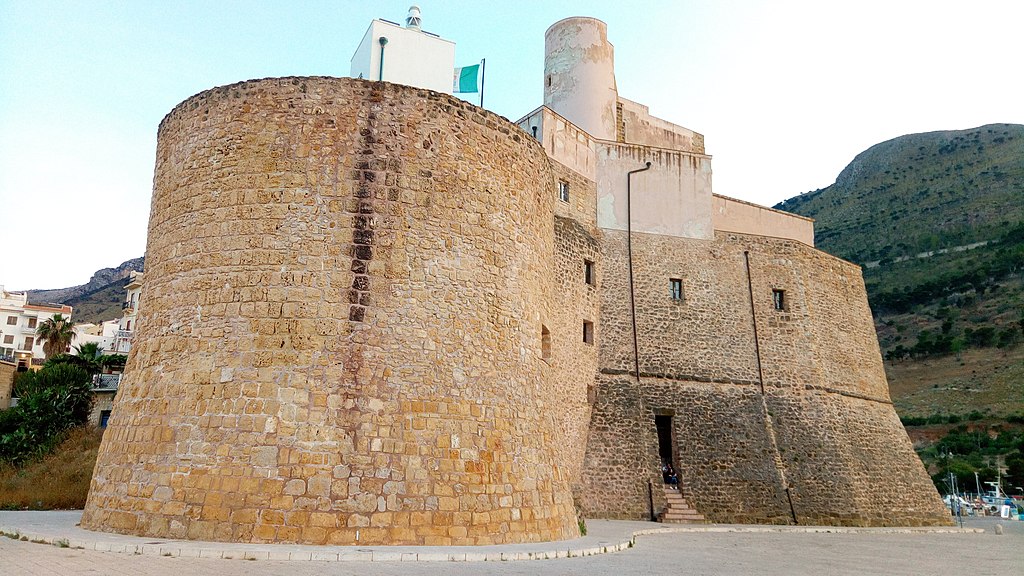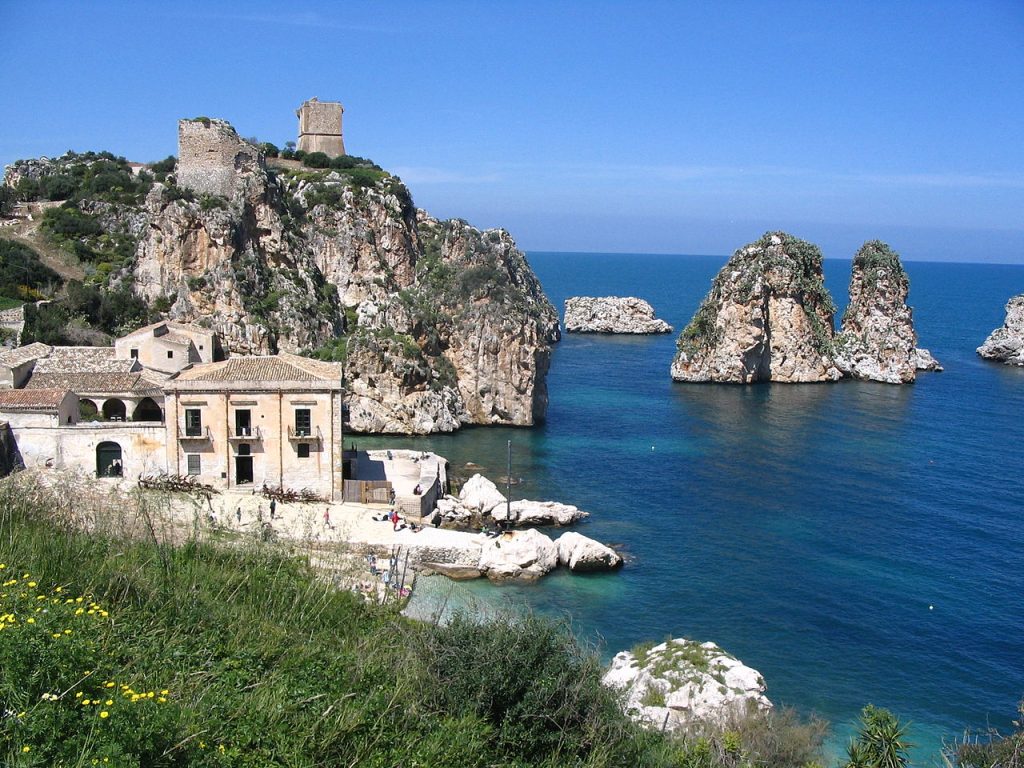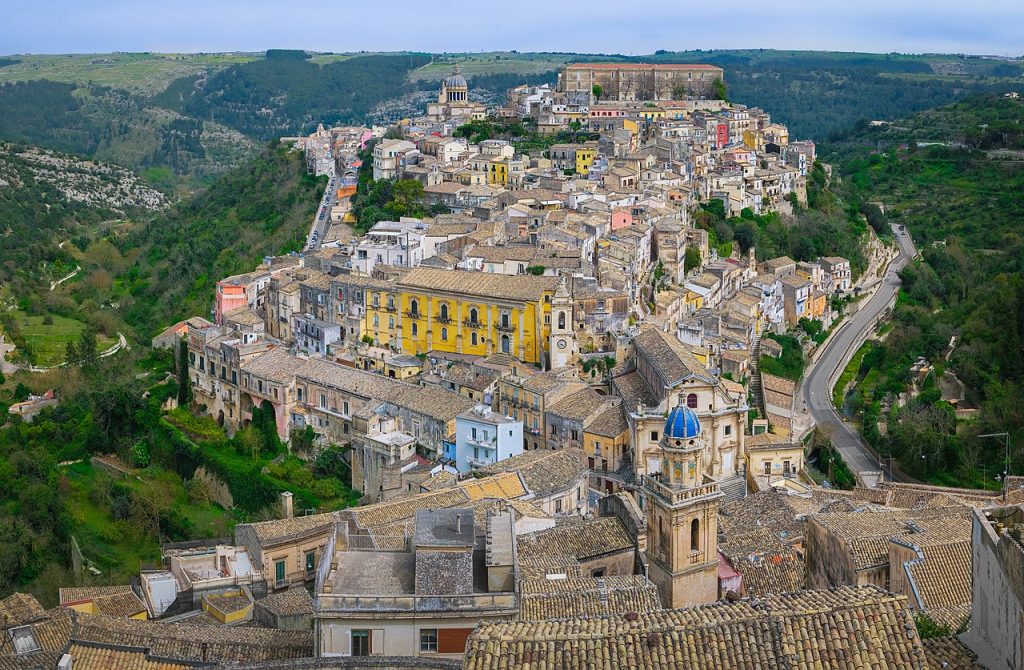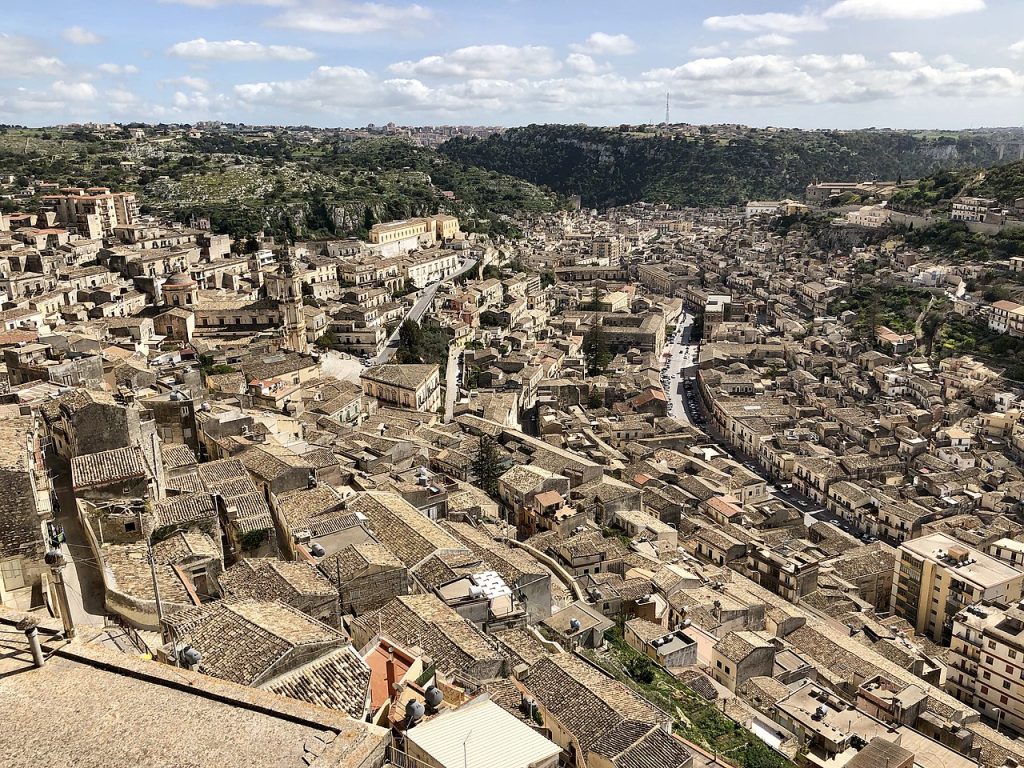Castellammare del Golfo is an Italian town of 15 250 inhabitants in Trapani district in Sicily.
It bases its economy on tourism, viticulture and fishing. Of particular interest is the historical re-enactment, which was celebrated every two years, of the attack on the port by the British, foiled, according to legend, by the arrival of the Madonna di l’assicursu (Madonna del Soccorso). The town stands on the slopes of the mountain complex of Monte Inici and gives its name to the homonymous gulf facing the castle, bordered to the east by Capo Rama and to the west by Capo San Vito.
Monuments and places of interest
Civil architectures
Palazzo Crociferi, an ancient convent of the Fathers of San Camillo di Lellis called cruciferous fathers for the big red cross that the Camillian fathers carry on their religious habit, now the Town Hall, built in 1659 together with the S. Maria degli agonizzanti church (the church of lu cummentu) now used as a council chamber.
Religious architectures
- Madonna del Rosario Church. It is located within the village adjacent to the castle and is assumed to have been erected in the Norman period around the year 1100. The church, very small, has a portal with a bas-relief of the Madonna col Bambino con I Santi ed il Crocifisso, attributed to Gagini. Inside, in a corner, there is a Black Madonna with Child (Madonna di l’agnuni).
- Purgatorio Church. Dating back to the end of the XIV century, it has valuable pictorial works of the XVII and XVIII centuries.
- Mother Church (La Matrici), born on the foundations of a previous church, its construction began in 1726 and the place opened to worship ten years later. It has three orders of aisles, houses the majolica statue representing the Madonna del Soccorso of the second half of the XVI century, frescoes by Giuseppe Tresca (it is also hypothesized the participation of Giuseppe Velasco) depicting episodes from the Old Testament and a XVII century holy water font.
- Madonna delle Grazie Church. It is from the beginning of the XVII century; inside there is a painting of the XVIII century, which depicts the Madonna col Bambino.
Military architectures
Castello a mare

Near the port of Castellammare del Golfo there is the so-called Castello a mare, so called because until the eighties it was lapped by the sea. The sea mirror in front of the tower was called “the queen’s tank” to indicate a natural basin bounded by rocks, which legend has it was in use to the queen of the castle.
It is thought that the castle at sea was built by the Arabs in the X century. The earliest records of the castle at sea date back to the Arab geographer Idrisi in 1154.
According to the same Idrisi, the castle in the sea served as an outbuilding of the most important manor of Calathamet (“Castle of the Baths”), which stood near the hot springs near Castellammare del Golfo.
It was enlarged by the Normans and subsequently fortified by the Suevians by the addition of defensive walls and towers. In 1316, following the struggles between the Angevins and the Aragonese, it was destroyed by Frederick II of Aragon and then rebuilt. It was first equipped with two crenellated towers (called “Torre di San Giorgio” and “Torre della Campana“), then a first wall was added in 1521, then in 1537 a third tower (called “il Baluardo“), a fourth tower in 1586 (which is the only tower that is still visible) and finally a second wall in 1587. During the same period the existing drawbridge was replaced with today’s masonry bridge.
Peter II of Aragon assigned it to Raimondo di Peralta and from these passed to the heirs Guglielmo and Nicolò. It was later owned by Pietro Spadafora Ruffo, who left it as a dowry to his daughter, thus becoming the property of Sigismondo di Luna. After a successive series of passages, he returned to the Luna family at the end of the XVI century. In 1649 it was sold to Francesca Balsamo Aragona, princess of Roccafiorita. Today it is public property and houses inside a museum that winds through a path called “The Memory of the Mediterranean” which includes four sections: the Museum of Water and the Mills, the Museum of Productive Activities, the Archaeological Museum and the Museum of Marine Activities.
Saracen towers
In the territory of Castellammare del Golfo there are also ancient Saracen watchtowers, including the watchtower in the bay of Guidaloca, Bennistra tower, the Tonnara tower of Scopello and the tower of Scopello.
Natural areas
The coast
The Castellammare coast includes both sandy stretches (including the fine sandy beach of the “Plaja“), and rocky stretches (consisting of the coves to the northwest of the town).
“La Plaja” beach is the largest beach in Castellammare del Golfo. It is located east of the city and begins immediately after the mouth of the San Bartolomeo river.
Within the city is Cala Petrolo (just after Punta Nord Est, coming from La Playa beach) and the small marina beach, near the port.
Immediately beyond the arm of the port, there is the “Vallone delle Ferle“, also known as “Vallone San Giuseppe“, from which the area called Pirale (“pedal”) begins, which reaches the peak of the same name, after which it begins the stretch called “Costa dei Gigli“, which extends to a point on the coast known by fishermen with the name of Nasu (“nose”). Continuing along this stretch of coast, turning back you always have the opportunity to see the country, which is no longer possible once you have passed the so-called “Porta” (‘N testa a la porta).
Beyond the “Porta” there is a small bay called Vucciria, with its caves, and to follow the “Fossa dello Stinco“, characterized by a high white cliff called Petri Vranchi (“white stones”). The white rocks continue even beyond Punta Falconera in the next named bay, perhaps for this reason, “Cala Bianca”.
Caves
Both on the massif of Monte Inici and on the walls facing the sea and below it, there are several caves
- S. Margherita Cave: it is located on a sheer cliff at 15 meters above sea level. On the side walls of the large cave you can see different paintings dating from the XIII and XIV centuries: a Madonna with Child, flanked by a Saint and another panel on the right, containing an unidentified character, who apparently wears a blanket silky decorated and fluttering; at the bottom of a large fish and a Saint surrounded by Angels; on the opposite side, to the left of the entrance, a Crucifixion and other figures. Traces of a fish processing plant and garum production have been found near the cave.
- Ficarella Cave: it is an underwater cave in the Zingaro Natural Reserve. You reach a depth of 14 meters through a large tunnel that leads to a large room on the sea level where you can take off the regulator and admire the walls of the cave.
- Hermit Cave also known as “cave of the horse”: located in the mountain complex of Monte Inici develops for 4,500 meters with a difference in height of 310 meters.
- Abisso dei Cocci with a development of 2,000 meters and a total height difference of 420 meters.
Segestan Baths
Located in Contrada Ponte Bagni, are part of the group of springs that flow along a fault at the slopes of Monte Inici, flowing into the River Caldo. Notes and exploited since ancient times, correspond to the statio of the Aquae Segestanae sive Pincianae reported in the Itinerarium Antonini. In the XII century they were known with the Arabic name al-hammah (“the thermal bath”).
Currently the Segestan Baths have a spa built in 1958 and expanded in 1990. The sulphurous water, at a temperature of about 44 ° C, feeds two thermal pools and the Grotta Regina, a natural sauna of Roman times.
In the hill above the current establishment are the archaeological remains and the castle of Calathamet (Qalcat al-hammah, “the fortress of the baths”), a settlement that is supposed to be founded in Islamic times (late X or early XI century). At the foot of the Calathamet relief (about 500 meters east), on a territory extended more than three hectares, there is instead the great archaeological site of Ponte Bagni, for which, unlike Calathamet, it seems certain a long continuity of life through the Roman, Byzantine and Islamic periods. The Aquae Segestanae of the Itinerarium are to be identified precisely with this site.
Scopello

Scopello is an Italian coast town, in Castellammare del Golfo district, in Trapani province.
It has 118 citizens, grew up around an Ancient Beam, 10 km far the administrative center, which during the summer time normally becomes of around 2000 citizens. Next to it we can find the Zingaro Natural Reserve, the “faraglioni” and the Tonnara.
Not so far from the beam we can find Guidaloca, a bay bordered by the Pizzo della Gnacara and della Puntazza. Inside of it, there are a big pebble beach, in arch shape and 400 meter length. On west side of the bay, there is Cylindrical tower dated back XVI century, putted like guard in that coast area.
The Tonnara
The Scopello Tonnara is one of the most important and ancient in Sicily: its first building came from the XIII century; the real Tonnara was built in XV century by Giovanni Sanclemente and then amplified by the Sanclemente family during the XVI century; then it was entrusted to the Compagnia di Gesù and finally to Florio family.

